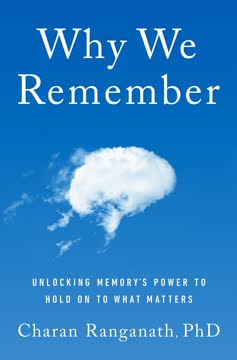가지 주요 요점
1. 사회보장 기본: 자격 요건 및 혜택 계산
"기본 보험 금액"(PIA)은 "정년 퇴직 연령"(FRA)에 혜택을 청구할 경우 받을 수 있는 월간 퇴직 혜택입니다.
자격 요건. 사회보장 퇴직 혜택을 받으려면 최소 62세 이상이어야 하며, 근로 기간 동안 40 "크레딧"을 획득해야 합니다. 2012년 기준으로 사회보장세가 부과되는 소득 $1,130당 1크레딧을 획득하며, 연간 최대 4크레딧을 획득할 수 있습니다.
혜택 계산. 혜택 금액은 인플레이션을 고려하여 조정된 35년 중 가장 높은 소득의 평균 지수화 월 소득(AIME)을 기반으로 합니다. 사회보장국은 AIME를 기본 보험 금액(PIA)으로 변환하는 공식을 사용하며, 이는 정년 퇴직 연령(FRA)에 청구할 경우 받을 수 있는 혜택입니다. FRA는 출생 연도에 따라 65세에서 67세 사이입니다.
- FRA 이전에 청구할 경우: 혜택이 감소합니다 (62세에 청구할 경우 최대 30% 감소)
- FRA 이후에 청구할 경우: 혜택이 증가합니다 (70세에 청구할 경우 최대 32% 증가)
- 연간 인플레이션 조정: 소비자 물가 지수를 기반으로 매년 혜택이 조정됩니다
2. 배우자 및 생존자 혜택: 가족 소득 극대화
62세에 도달하면, 본인의 근로 기록이 없어도 퇴직 또는 장애 혜택을 받을 자격이 있는 배우자의 배우자로서 사회보장 혜택을 받을 수 있습니다. 단, 세 가지 요건 중 하나를 충족해야 합니다.
배우자 혜택. 결혼한 경우, 배우자의 근로 기록을 기반으로 배우자 혜택을 받을 수 있습니다. 정년 퇴직 연령에 이르면 이 혜택은 배우자의 PIA의 최대 50%까지 받을 수 있습니다. 62세부터 청구할 수 있지만, 금액은 감소합니다. 중요한 점은 배우자가 자신의 퇴직 혜택을 청구하기 전까지는 배우자 혜택을 청구할 수 없습니다.
생존자 혜택. 배우자가 사망할 경우, 사망한 배우자의 혜택 금액의 최대 100%까지 생존자 혜택을 받을 수 있습니다. 자격 요건:
- 최소 9개월 이상 결혼 상태여야 합니다
- 최소 60세 이상이어야 합니다 (장애가 있는 경우 50세)
- 60세 이전에 재혼하지 않아야 합니다
극대화 전략:
- 높은 소득자의 혜택을 지연시켜 배우자 및 잠재적 생존자 혜택을 증가시킵니다
- 자신의 퇴직 혜택을 성장시키는 동안 배우자 혜택을 청구하는 것을 고려합니다
- 다양한 혜택에 대한 자격에 미치는 재혼의 영향을 이해합니다
3. 전략적 청구: 최적의 결과를 위한 혜택 타이밍
결혼한 부부의 경우, 각 배우자의 청구 결정에서 두 배우자의 기대 수명을 고려해야 합니다.
독신 개인. 62세와 70세에 청구하는 경우의 손익 분기점은 약 80.5세입니다. 이 나이 이상 살 것으로 예상된다면, 혜택을 지연시키는 것이 더 높은 평생 지급액을 가져올 수 있습니다. 건강, 가족력, 재정적 필요를 고려하여 결정합니다.
결혼한 부부. 두 사람이 관련되면 결정이 더 복잡해집니다. 일반적인 전략은 다음과 같습니다:
- 높은 소득자 지연: 생존자 혜택을 증가시켜 부부가 살아 있는 동안 혜택을 줍니다
- 낮은 소득자 조기 청구: 높은 혜택이 성장하는 동안 소득을 제공합니다
- 제한된 신청: 정년 퇴직 연령에 배우자 혜택을 청구하면서 자신의 혜택을 70세까지 성장시킵니다
- 신청 및 중단: FRA에서 혜택을 신청하지만 즉시 중단하여 배우자가 배우자 혜택을 청구할 수 있도록 하면서 자신의 혜택이 계속 성장하도록 합니다
고려해야 할 요소:
- 배우자 간의 나이 차이
- 두 파트너의 건강 및 기대 수명
- 현재 및 미래의 재정적 필요
- 기타 퇴직 소득원
4. 특별 고려 사항: 이혼, 자녀, 정부 연금
사회보장세가 부과되지 않는 근로로 연금을 받는 경우, 바람직하지 않은 결과 조항(WEP)이 사회보장세가 부과된 근로로부터 받을 수 있는 사회보장 혜택(배우자나 자녀가 해당될 경우)을 줄일 것입니다.
이혼한 배우자 혜택. 최소 10년 이상 결혼한 경우, 전 배우자의 기록을 기반으로 혜택을 받을 수 있습니다. 전 배우자가 재혼했더라도 가능합니다. 전 배우자가 혜택을 받을 자격이 있어야 하며, 본인은 미혼이어야 합니다.
자녀 혜택. 퇴직, 장애, 사망한 근로자의 자녀는 다음 조건을 충족할 경우 혜택을 받을 수 있습니다:
- 18세 미만 (또는 고등학교에 재학 중인 경우 19세까지)
- 22세 이전에 장애가 있는 경우
정부 연금 상쇄(GPO). 사회보장세가 부과되지 않는 정부 직장에서 연금을 받는 경우, 사회보장 배우자 또는 생존자 혜택이 정부 연금의 2/3만큼 줄어들 수 있습니다.
바람직하지 않은 결과 조항(WEP). 사회보장세가 부과되지 않는 근로로 연금을 받는 경우, 본인의 사회보장 혜택이 줄어들 수 있지만, 완전히 없어지지는 않습니다. 감소는 사회보장세가 부과된 근로에서의 실질 소득 연수에 따라 달라집니다.
5. 소득 테스트: 혜택을 받으면서 일하기
반퇴직 단계를 포함하는 퇴직 계획을 세울 때, 사회보장 소득 테스트를 고려해야 합니다.
작동 방식. 정년 퇴직 연령(FRA) 이전에 혜택을 청구하고 계속 일하는 경우:
- 2012년 기준으로 $14,640 이상을 벌면 $2당 혜택이 $1 줄어듭니다
- FRA에 도달하는 해에는 한도가 더 높으며 ($38,880, 2012년 기준), 이 한도를 초과하여 $3당 $1이 공제됩니다
- FRA에 도달한 후에는 소득에 제한이 없습니다
중요한 고려 사항:
- 근로 소득만 해당됩니다 (임금, 자영업); 투자나 연금은 해당되지 않습니다
- 보류된 혜택은 영원히 사라지지 않으며, FRA에 도달한 후 혜택 금액에 다시 추가됩니다
- 소득 테스트는 본인의 혜택과 본인의 기록을 기반으로 가족 구성원에게 지급되는 혜택에 적용됩니다
- 퇴직 첫 해에는 연간 소득에 관계없이 특정 한도 이하로 벌어들인 달에 대해 전체 혜택을 받을 수 있는 특별 규칙이 있습니다
6. 세금 영향: 사회보장이 전체 소득에 미치는 영향
특정 연도의 "결합 소득"이 얼마나 높은지에 따라, 사회보장 혜택이 비과세되거나 부분적으로 과세될 수 있습니다 (최대 85%가 해당 연도의 과세 소득에 포함될 수 있음).
혜택의 과세. 사회보장 혜택의 과세 대상 금액은 "결합 소득"에 따라 다릅니다:
- AGI + 비과세 이자 + 사회보장 혜택의 1/2
과세 기준 (2012년 기준):
독신 신고자:
- $25,000 미만: 혜택에 대한 세금 없음
- $25,000-$34,000: 최대 50%의 혜택이 과세될 수 있음
- $34,000 이상: 최대 85%의 혜택이 과세될 수 있음
부부 공동 신고: - $32,000 미만: 혜택에 대한 세금 없음
- $32,000-$44,000: 최대 50%의 혜택이 과세될 수 있음
- $44,000 이상: 최대 85%의 혜택이 과세될 수 있음
세금 계획 전략:
- 사회보장 청구 전에 Roth IRA 전환을 고려합니다
- 과세 소득을 관리하기 위해 다양한 계좌 유형(과세, 세금 연기, Roth)에서 인출을 관리합니다
- 기타 소득원(연금, 파트타임 근무)이 혜택의 과세에 미치는 영향을 인지합니다
7. 사회보장을 고려한 퇴직 포트폴리오 최적화
퇴직 포트폴리오의 자산 배분을 결정할 때, 이를 두 개의 별도 포트폴리오로 생각하는 것이 도움이 될 수 있습니다: 하나는 사회보장을 받기 전 퇴직 초기 몇 년 동안 소비할 매우 보수적으로 투자된 포트폴리오이고, 다른 하나는 전체 퇴직 기간 동안의 지출 필요를 충족하기 위해 더 공격적으로 투자된 포트폴리오입니다.
두 포트폴리오 접근법. 사회보장 지연을 계획할 때:
- 단기 포트폴리오: 사회보장이 시작될 때까지의 비용을 충당
- 보수적으로 투자 (예: 저위험 채권 펀드, CD 사다리)
- 연간 지출 필요와 청구까지의 연수를 기반으로 크기 결정
- 장기 포트폴리오: 퇴직 기간 동안의 비용을 충당
- 더 공격적으로 투자할 수 있음
- 주식, 채권, 가능하면 연금의 혼합을 고려
고려 사항:
- 사회보장 청구 연령에 접근할수록 자산 배분을 조정합니다
- 결혼한 경우 다른 청구 연령을 고려합니다
- 시장 상황과 개인 상황에 따라 정기적으로 재평가합니다
8. 재시작 옵션: 너무 일찍 청구한 경우의 대처 방법
혜택을 받은 지 12개월 미만인 경우를 제외하고, 신청 철회 양식을 제출하고 지금까지 받은 혜택을 상환하여 신청을 "취소"하는 것은 더 이상 불가능합니다.
12개월 재시작. 처음 청구한 지 12개월 이내에:
- 신청을 철회할 수 있습니다
- 받은 모든 혜택을 상환할 수 있습니다
- 나중에 더 높은 금액으로 혜택을 재개할 수 있습니다
혜택 중단. 정년 퇴직 연령에 도달한 경우:
- 현재 혜택을 중단할 수 있습니다
- 혜택은 연간 8%씩 증가하며 70세까지 가능합니다
- 70세 이전에 언제든지 혜택을 재개하여 증가된 금액을 받을 수 있습니다
혜택을 받으면서 일하기. FRA 이전인 경우:
- 소득 테스트로 인해 혜택이 줄어들 수 있습니다
- FRA에 도달한 후, 보류된 달을 고려하여 혜택이 재계산됩니다
청구 소급. 신청 시, 신청일 이전 최대 6개월까지의 혜택을 요청할 수 있지만, FRA에 도달하기 전에는 불가능합니다 (자녀 혜택 제외).
마지막 업데이트 날짜:
FAQ
What's "Social Security Made Simple" about?
- Overview: "Social Security Made Simple" by Mike Piper is a concise guide that explains Social Security retirement benefits and related planning topics in 100 pages or less.
- Purpose: The book aims to demystify the complexities of Social Security, helping readers understand how to maximize their benefits.
- Structure: It is organized into four parts, covering Social Security basics, rules for less common situations, planning strategies, and related topics like tax implications.
- Target Audience: The book is intended for individuals planning for retirement who want a clear and straightforward understanding of Social Security benefits.
Why should I read "Social Security Made Simple"?
- Clarity and Simplicity: The book breaks down complex Social Security topics into easy-to-understand language, making it accessible for readers without a financial background.
- Practical Advice: It provides actionable strategies for maximizing Social Security benefits, which can significantly impact retirement income.
- Comprehensive Coverage: Despite its brevity, the book covers a wide range of topics, from basic eligibility to advanced claiming strategies.
- Author Expertise: Written by Mike Piper, a CPA with extensive knowledge in personal finance, ensuring the information is both accurate and reliable.
What are the key takeaways of "Social Security Made Simple"?
- Eligibility and Benefits Calculation: Understanding how to qualify for benefits and how they are calculated based on earnings history and age.
- Claiming Strategies: Insights into when to claim benefits for maximum advantage, especially for married couples and those with pensions.
- Tax Implications: Explanation of how Social Security benefits are taxed and strategies for minimizing tax liabilities.
- Planning for Longevity: Emphasizes the importance of considering life expectancy in retirement planning to avoid outliving resources.
How does "Social Security Made Simple" explain the calculation of retirement benefits?
- Earnings History: Benefits are calculated based on your average indexed monthly earnings from your 35 highest-earning years.
- Primary Insurance Amount (PIA): This is the monthly benefit you would receive if you start collecting at full retirement age.
- Age Impact: Claiming benefits before or after full retirement age affects the monthly amount, with reductions for early claims and increases for delayed claims.
- Inflation Adjustments: Benefits are adjusted annually for inflation, ensuring they maintain purchasing power over time.
What strategies does "Social Security Made Simple" suggest for married couples?
- Higher Earner Delay: It often benefits the couple if the higher-earning spouse delays claiming benefits to increase survivor benefits.
- Restricted Application: At full retirement age, one spouse can file for spousal benefits while allowing their own benefits to grow.
- File and Suspend: Allows one spouse to file for benefits and immediately suspend them, enabling the other spouse to claim spousal benefits.
- Combined Strategies: Couples can sometimes combine strategies to maximize benefits, depending on their specific circumstances.
How does "Social Security Made Simple" address Social Security for divorced spouses?
- Eligibility Requirements: Divorced spouses can claim benefits if the marriage lasted at least ten years and they are currently unmarried.
- Benefit Calculation: Similar to spousal benefits, divorced spouse benefits are based on the ex-spouse's primary insurance amount.
- Surviving Divorced Spouse Benefits: These are available if the ex-spouse has passed away, with benefits calculated similarly to widow(er) benefits.
- Remarriage Impact: Remarrying before age 60 generally disqualifies a person from claiming benefits on a former spouse's record.
What does "Social Security Made Simple" say about the taxation of Social Security benefits?
- Combined Income: Taxation depends on your combined income, which includes adjusted gross income, tax-exempt interest, and half of your Social Security benefits.
- Tax Thresholds: Benefits are not taxed if combined income is below $25,000 for individuals or $32,000 for couples filing jointly.
- Tax Rates: Up to 85% of benefits can be taxable, depending on income levels, with specific thresholds triggering different tax rates.
- Tax Planning: The book suggests strategies to minimize taxes, such as adjusting withdrawals from tax-deferred accounts before collecting Social Security.
How does "Social Security Made Simple" suggest handling Social Security with a pension?
- Windfall Elimination Provision (WEP): This provision reduces Social Security benefits for those receiving a pension from non-Social Security-taxed work.
- Government Pension Offset (GPO): Reduces spousal or survivor benefits by two-thirds of the pension amount from non-Social Security-taxed work.
- Impact on Benefits: Both provisions can significantly reduce the Social Security benefits one might expect, depending on the pension amount.
- Planning Considerations: Understanding these provisions is crucial for accurate retirement planning and maximizing available benefits.
What are the "do-over" options discussed in "Social Security Made Simple"?
- 12-Month Do-Over: Allows withdrawal of application and repayment of benefits within 12 months of starting, effectively resetting the benefit amount.
- Suspending Benefits: At full retirement age, benefits can be suspended to earn delayed retirement credits, increasing future benefits.
- Earnings Test: Working while receiving benefits can reduce them, but benefits are recalculated at full retirement age to account for withheld amounts.
- Backdating Claims: Allows for retroactive benefits up to six months prior to the application date, but not before reaching full retirement age.
What does "Social Security Made Simple" say about the earnings test?
- Pre-FRA Earnings Test: Benefits are reduced by $1 for every $2 earned above a certain threshold before reaching full retirement age.
- Post-FRA Earnings: The earnings test does not apply after reaching full retirement age, allowing unlimited earnings without benefit reduction.
- Family Impact: The earnings test can also reduce benefits for family members receiving benefits based on the worker's record.
- Grace Year Rule: In the first year of retirement, benefits may not be reduced if earnings exceed the threshold, depending on monthly earnings.
What are the best quotes from "Social Security Made Simple" and what do they mean?
- "The Benefits of Understanding Your Benefits": Highlights the importance of knowing how Social Security works to maximize retirement income.
- "Let’s Keep This Brief": Emphasizes the book's goal of providing a concise yet comprehensive overview of Social Security.
- "The longer you expect to live...": Stresses the significance of life expectancy in deciding when to claim benefits for optimal financial security.
- "The higher the after-inflation rate of return...": Suggests that investment returns can influence the decision to claim benefits early or delay them.
How does "Social Security Made Simple" suggest checking and correcting your earnings record?
- Online Access: Create an account on the Social Security website to view your earnings record and estimate benefits.
- Identify Errors: Regularly check for discrepancies in your earnings record to ensure accurate benefit calculations.
- Correcting Mistakes: Provide documentation like W-2s or tax returns to the SSA to correct any errors in your earnings record.
- Documentation Sources: If needed, request earnings documentation from former employers or the IRS to support corrections.
Similar Books













